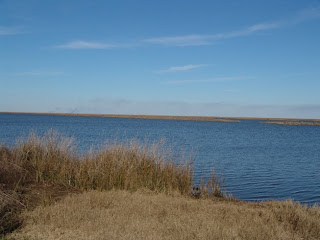

We spent last week visiting Audubon's Rainey Wildlife Sanctuary, which encompasses over 20,000 acres of freshwater marsh in south Louisiana, with a side trip to Avery Island, home of Tabasco and a salt dome. We were there to see work being done to preserve the marsh, which is disappearing at an alarming rate.


Canals dug for navigation and oil/gas exploration can be seen clearly in the satellite images of the Louisiana coast. These avenues allow saltwater to reach more deeply into the freshwater marsh. Additionally, these canals allow the tides to move in and out more quickly. Recent hurricanes have rolled sections of the marsh like a rug, which has left open water in the middle of once solid blocks of marsh. Once open water appears, wind can create wave action that further erodes the marsh and enlarges the open area.


The canals are not likely to disappear, but erosion control along the sides, reduced speeds for boat traffic, and levee maintenance can mitigate damage to the marsh. However, there is something that can be done to reduce the erosion to and possibly establish marsh in areas that have opened. The parallel and herringbone-pattern features shown in the satellite image were created from sediments at the bottom of the "lakes" and oriented to slow winds from the southeast. By slowing the wind, erosion has been reduced, turbidity in the water has been reduced, and underwater aquatic vegetation has increased.
Although the Rainey Sanctuary is not as affected, other areas of the Louisiana coast have suffered as water and, more importantly, sediment have been diverted from the marsh. Sediments brought down the Mississippi River that once renourished the marsh, now create a dead zone in the Gulf of Mexico.
For now, the marsh continues to be incredibly productive. Red-shouldered Hawks were posted along the canal at 100-yard intervals; Great Blue Herons, Great Egrets, Snowy Egrets, and Black-necked Stilts waded in the shallow water; Snow Geese flew overhead like noisy clouds; ducks of every sort occupied the marsh and erupted like locust swarms whenever a potential predator cruised overhead; deer, opossum, raccoons and nutria appeared for the mammals; a lone alligator braved the cool weather to sun on the canal bank and represent the reptiles; and catfish caught fresh upon our arrival provided us dinner.

No comments:
Post a Comment